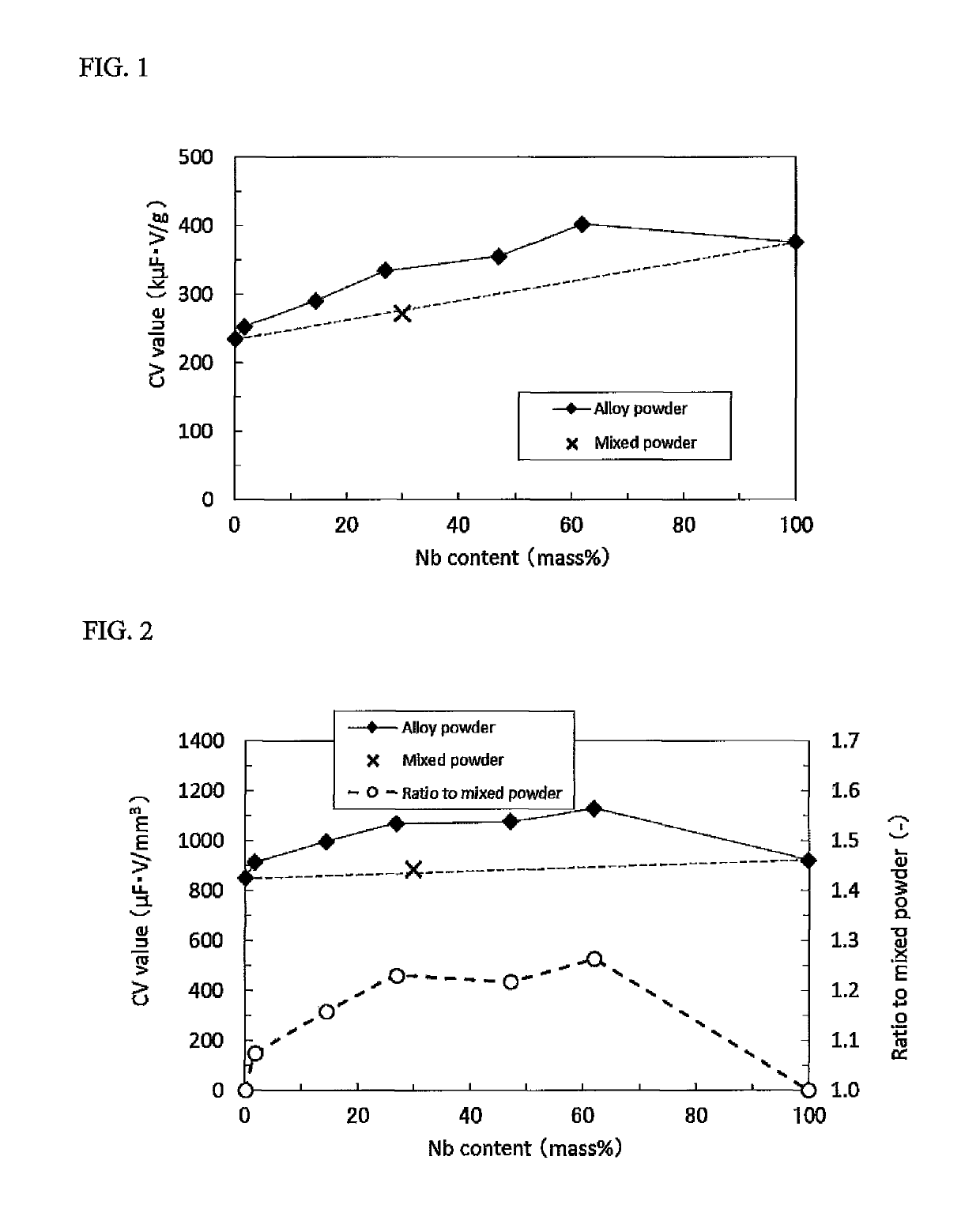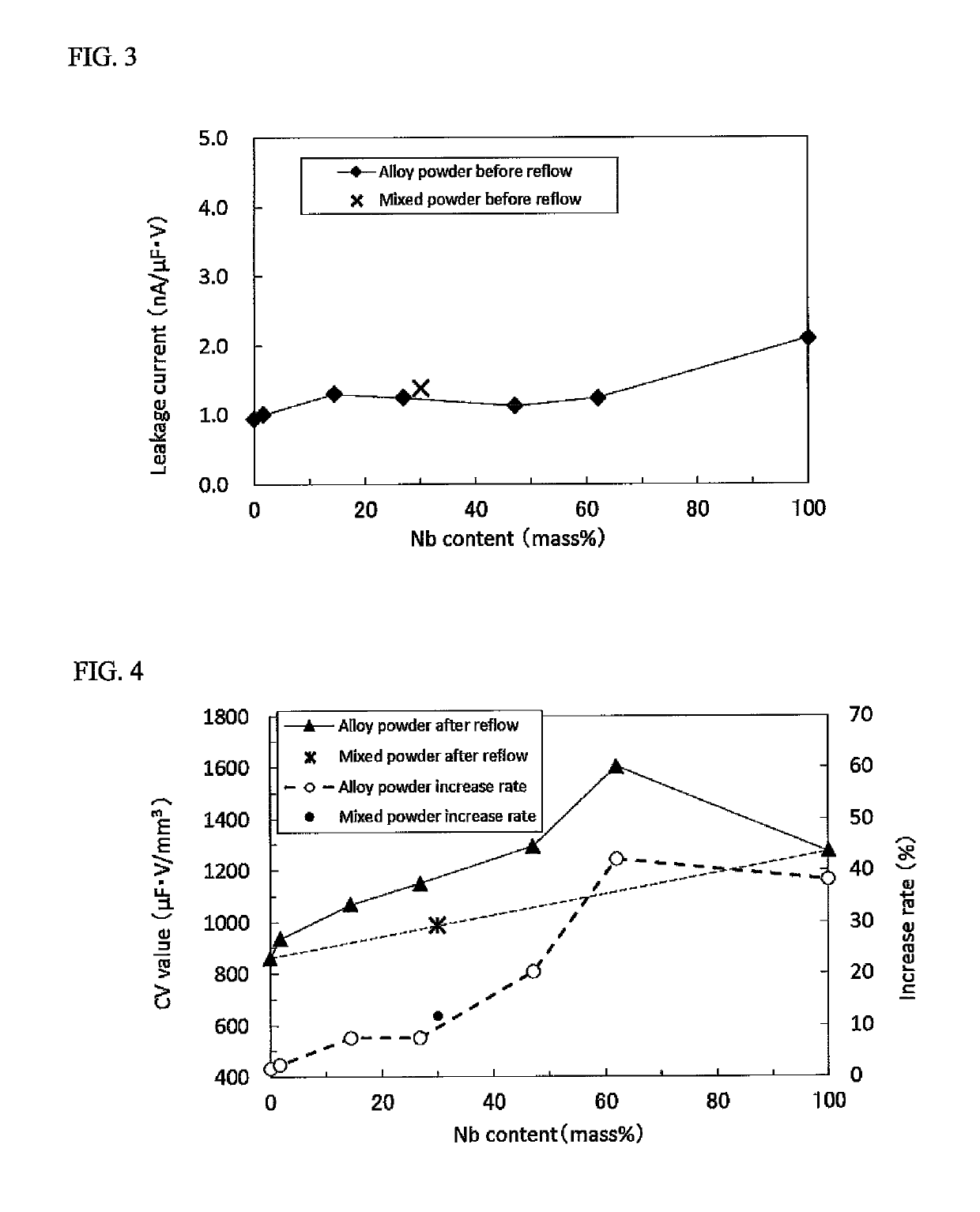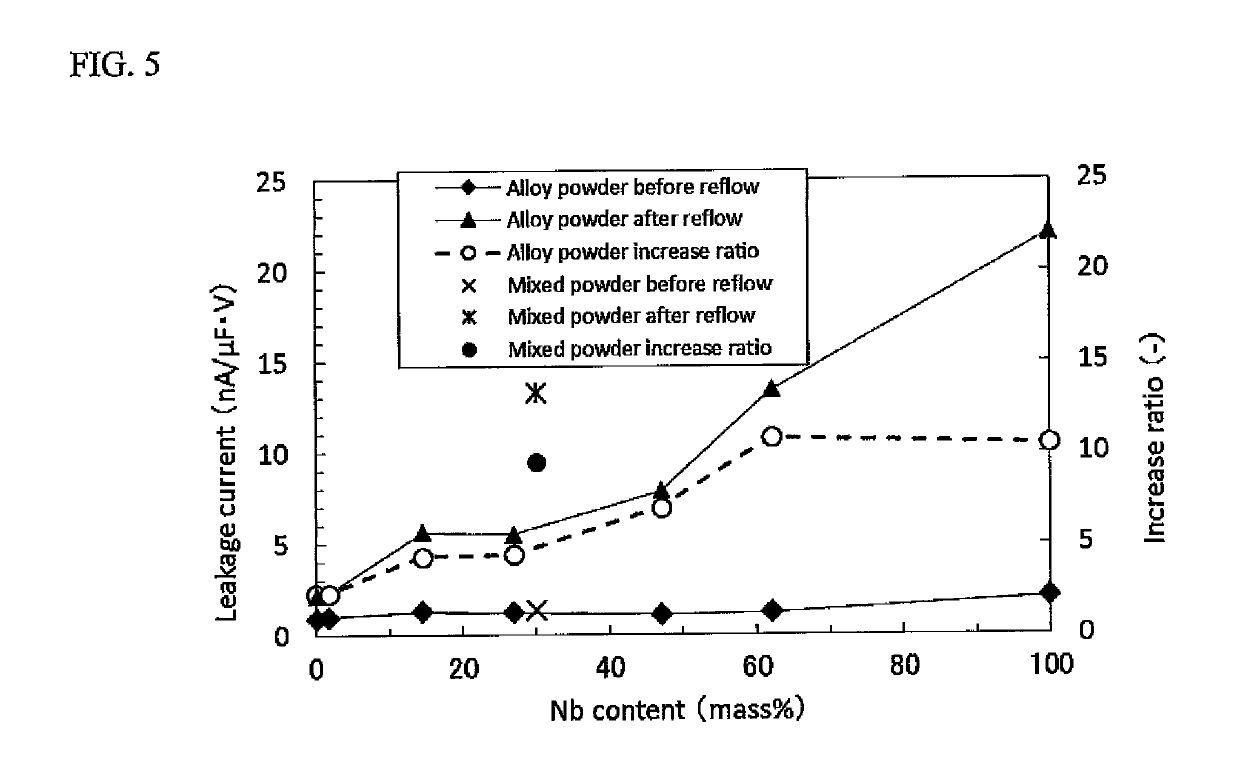Ta—Nb alloy powder and anode element for solid electrolytic capacitor
a solid electrolytic capacitor and alloy powder technology, applied in the direction of electrolytic capacitors, capacitors, transportation and packaging, etc., can solve the problems of low thermal stability, achieve better oxide film characteristics, reduce size, and increase cv value
- Summary
- Abstract
- Description
- Claims
- Application Information
AI Technical Summary
Benefits of technology
Problems solved by technology
Method used
Image
Examples
experiment 1
[0042]A Ta powder, a Nb powder, and Ta—Nb alloy powders in which the Nb content is variously changed (hereinafter the above three types of powders will be collectively referred to as “metal powders”) are produced by a thermal CVD method. In the production of the above metal powders, the production conditions are adjusted so that the average particle diameter of the primary particles is within the range of 60 to 120 nm. Then, each of the above metal powders is pressure-molded into a pellet having a diameter of 3 mmφ and a length of 4 mm. At this time, the molding density ρ (g / cm3) of the pellet after the above pressure molding is adjusted so as to fall in the range of ±0.10 g / cm3 with respect to ρc obtained from the following formula (1);
ρc=−0.012RNb+3.57 (1)
according to the content of Nb in the Ta—Nb alloy, RNb, (mass %). Here, the molding density is a value excluding that of the wire.
[0043]Here, the reason why the molding density is adjusted as described above is as follows. The t...
experiment 2
[0058]Next, in order to examine the thermal stability of the Ta—Nb alloy powders, the inventors examine changes in the CV value (μF·V / mm3) and the leakage current LC by subjecting each of the elements after the chemical conversion treatment used in the above experiment to heat treatment at 260° C. for 30 minutes in an argon gas atmosphere in a simulation of reflow treatment during mounting. The CV value and the leakage current LC are measured under the same conditions as the above-described . Moreover, the Ta—Nb mixed powder is also similarly examined as reference.
[0059]FIG. 4 shows the CV values per unit volume (μF·V / mm3) before and after the reflow treatment in comparison. From this figure, the CV value per unit volume after the reflow treatment is increased with an increase in the content of Nb, and the increase rate (%) with respect to the CV value before the reflow treatment is about 20% when the Nb content is not more than 47 mass %. When the content of Nb is 62 mass %, howeve...
examples
[0071]Ta—Nb alloy powders (primary particles) having a Nb content of 30 mass % and an average particle diameter variously changed in the range of 20 to 250 nm as shown in Table 2 are produced by a thermal CVD method, then each of the above alloy powders is water-washed and dried, a cellulosic binder is added, and then the mixture is granulated using a rotary drum to form granulated particles (secondary particles) having a median diameter d50 of 30 to 50 μm.
[0072]Then, a sintered element is made with the above granulated particles in accordance with test conditions of 100 kCV powder defined in Table 1 in the appendix to Standard of Electronic Industries Association of Japan EIAJ RC-2361A “Test methods of tantalum sintered anodes for electrolytic capacitors.” At this time, the molding density of the element (pellet) is adjusted so as to fall within ±0.10 g / cm3 with respect to ρc obtained by the above-described formula (1). Generally, the optimum sintering temperature of the element de...
PUM
| Property | Measurement | Unit |
|---|---|---|
| particle diameter | aaaaa | aaaaa |
| size | aaaaa | aaaaa |
| average particle diameter | aaaaa | aaaaa |
Abstract
Description
Claims
Application Information
 Login to View More
Login to View More - R&D
- Intellectual Property
- Life Sciences
- Materials
- Tech Scout
- Unparalleled Data Quality
- Higher Quality Content
- 60% Fewer Hallucinations
Browse by: Latest US Patents, China's latest patents, Technical Efficacy Thesaurus, Application Domain, Technology Topic, Popular Technical Reports.
© 2025 PatSnap. All rights reserved.Legal|Privacy policy|Modern Slavery Act Transparency Statement|Sitemap|About US| Contact US: help@patsnap.com



